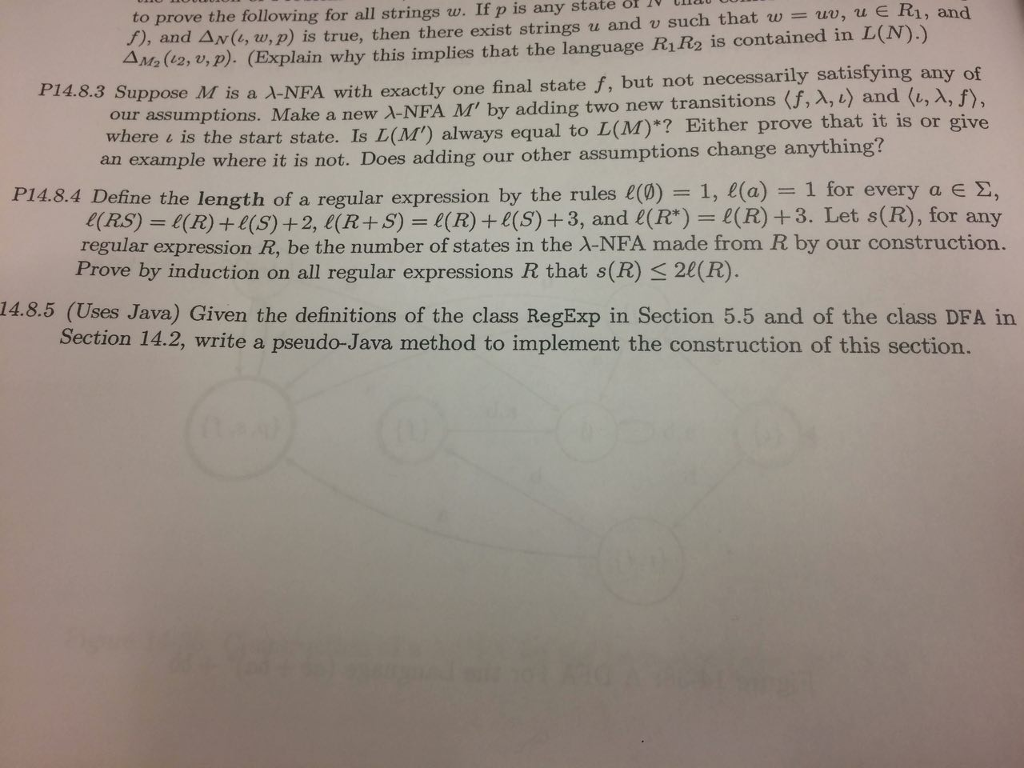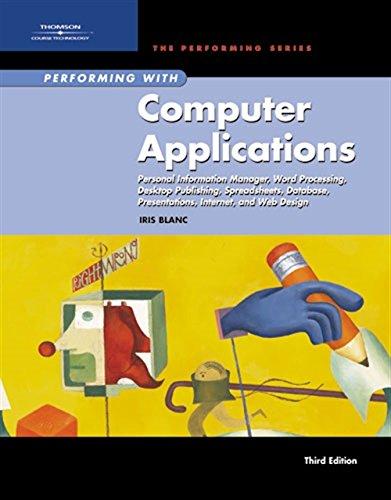Please do 14.8.4

to prove the following for all strings w. If p is any state of aU Ma (ep, v, D). (Explain why this implies that the language R1 R2 is contained in L(N).) uppose f is a A-NFA with exactly one final state f, but not necessarily satisfying any of ere is the start state. Is L(M') always equal to L(M)*? Either prove that it is or give ?), and ??(1, tv,P) is true, then there exist strings u and u such that w = uo, u E R1, and ourassumptions. Make a newANFA M' by adding two newtransitions(f, ?, l) and (1, ?, f), an example w here it is not. Does adding our other assumptions change anything? P14BA Define the length of a regular expression by the rules 1(0)-1, 1(a) = 1 for every a e ?, 1(RS) 1(R) + 1(S) + 2, 1(R + S) = 1(R) + 1(S) + 3, and 1(R") 1(R) + 3 . Let s(R), for any regular expression R, be the number of states in the ?-NFA made from R by our construction. Prove by induction on all regular expressions R that s(R) 20(R) 14.8.5 (Uses Java) Given the definitions of the class RegExp in Section 5.5 and of the class DFA in Section 14.2, write a pseudo-Java method to implement the construction of this section. to prove the following for all strings w. If p is any state of aU Ma (ep, v, D). (Explain why this implies that the language R1 R2 is contained in L(N).) uppose f is a A-NFA with exactly one final state f, but not necessarily satisfying any of ere is the start state. Is L(M') always equal to L(M)*? Either prove that it is or give ?), and ??(1, tv,P) is true, then there exist strings u and u such that w = uo, u E R1, and ourassumptions. Make a newANFA M' by adding two newtransitions(f, ?, l) and (1, ?, f), an example w here it is not. Does adding our other assumptions change anything? P14BA Define the length of a regular expression by the rules 1(0)-1, 1(a) = 1 for every a e ?, 1(RS) 1(R) + 1(S) + 2, 1(R + S) = 1(R) + 1(S) + 3, and 1(R") 1(R) + 3 . Let s(R), for any regular expression R, be the number of states in the ?-NFA made from R by our construction. Prove by induction on all regular expressions R that s(R) 20(R) 14.8.5 (Uses Java) Given the definitions of the class RegExp in Section 5.5 and of the class DFA in Section 14.2, write a pseudo-Java method to implement the construction of this







